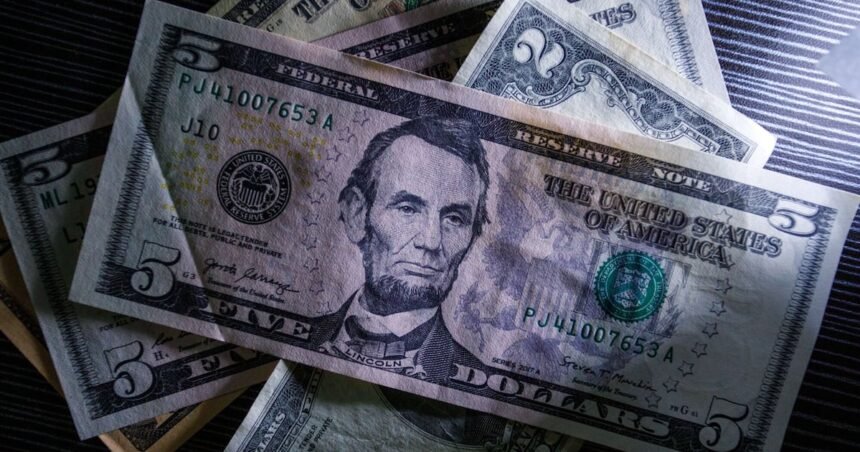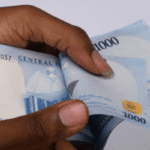(Bloomberg) — Here’s what sounds like a surefire way to improve an asset’s returns: Use cheaper money to buy it. That’s the core of what’s known as a foreign-currency carry trade. Investors take advantage of a difference in interest rates between two countries to borrow where the rate is low and invest where it’s high. Carry trades are especially popular when central banks in different parts of the world pursue diverging monetary policies, as one country might fight inflation while another seeks to boost growth. But be warned. The trades can also be a good way to lose large sums, given that exchange rates are prone to unpredictable corrections.
1. Why is it called a carry trade?
In finance speak, the “carry” of an asset is the return obtained from holding it. So a carry trade involves buying a currency and “carrying” it until you make a profit.
2. How does it work?
According to economic theory, the strategy shouldn’t work at all. High interest rates should imply that a country has poor economic fundamentals or faster inflation, and therefore its currency should depreciate. So the difference in interest rates between two countries should reflect the rate at which investors expect the high-interest-rate currency to depreciate against the low-interest-rate currency.
3. So why does it work?
In practice, yield-hungry investors are usually prepared to overlook poor fundamentals if the reward is high enough. The carry traders themselves then help to strengthen the high-interest-rate currency by investing in it. When that starts to happen, more investors want to get involved in the trade, helping the currency advance even more. The theory doesn’t always match reality. Sometimes, high interest rates come at a turning point when policymakers start to fix their economy, prompting appreciation in the country’s assets.
4. What are some examples?
Investors have employed the trade for decades to make money betting on currencies including the South African rand, Hungarian forint and the Mexican peso. In 2018, Turkey and Argentina emerged as carry trade venues because of their central banks’ responses to their localized economic troubles. In 2022, traders saw an opportunity when a number of central banks in Latin America raised interest rates sharply in response to the inflation that followed the economic rebound from pandemic shutdowns, even as the US Federal Reserve and the European Central Bank left rates extremely low. And in 2024, thwarted expectations for aggressive rate cuts by the Fed reignited bets on the dollar, using the beleaguered yen as a funding currency.
5. Who makes these trades?
Until the 1990s, the strategy was the realm of hedge-fund managers betting on obscure emerging-market currencies, and the term was little known in mainstream finance. Then the Bank of Japan cut its interest rates close to zero and traders across the world realized they could make a profit borrowing in yen to buy dollar-based assets. These days the strategy is the territory of investors in bonds and other fixed-income assets and trades are typically short-term, according to the Bank for International Settlements.
6. How do they do it?
The most common way to implement a carry trade is to borrow money in Country A, where interest rates are low, exchange it for the currency of Country B, where rates are high, and invest in bonds in Country B. Investors who don’t want or aren’t able to invest in local-currency bonds can access carry returns through currency swaps and futures contracts, instruments that give payouts based on exchange-rate moves over time.
7. What are the returns like?
After adjusting for risk, some research suggests that the carry trade typically outperforms stocks. The Bloomberg Cumulative FX Carry Trade Index, which tracks the performance of eight emerging-market currencies versus the dollar, has had positive returns in 11 of the past 20 years — so gains by that measure are slightly more likely than a coin-flip.
8. What can go wrong?
Economists have likened the carry trade to picking up pennies in front of a steam roller — the money’s there for the taking, so long as you don’t dally and get crushed. Just ask US hedge fund FX Concepts, which went bust in 2013 when it reacted slowly to decisions by central banks across the world to cut interest rates to virtually zero. Another good example is the yen-dollar carry trade of the late-1990s. In just one week in 1998, the yen rose 16% versus the dollar, reversing years of profitability for carry-trade investors who had borrowed in yen to invest elsewhere. The yen’s sharp gain in July 2024 sparked a broad-based liquidation of global carry trades, hurting some emerging-market currencies that had benefited from the wager.
9. Why can trouble emerge so suddenly?
Reversals of fortune in carry trades can be triggered by a tightening of monetary policy in the low-interest-rate currency, an unforeseen event that reduces the attractiveness of the target currency or simply a realization in the market that the target currency has become detached from economic fundamentals.
–With assistance from Anya Andrianova.
©2024 Bloomberg L.P.





















